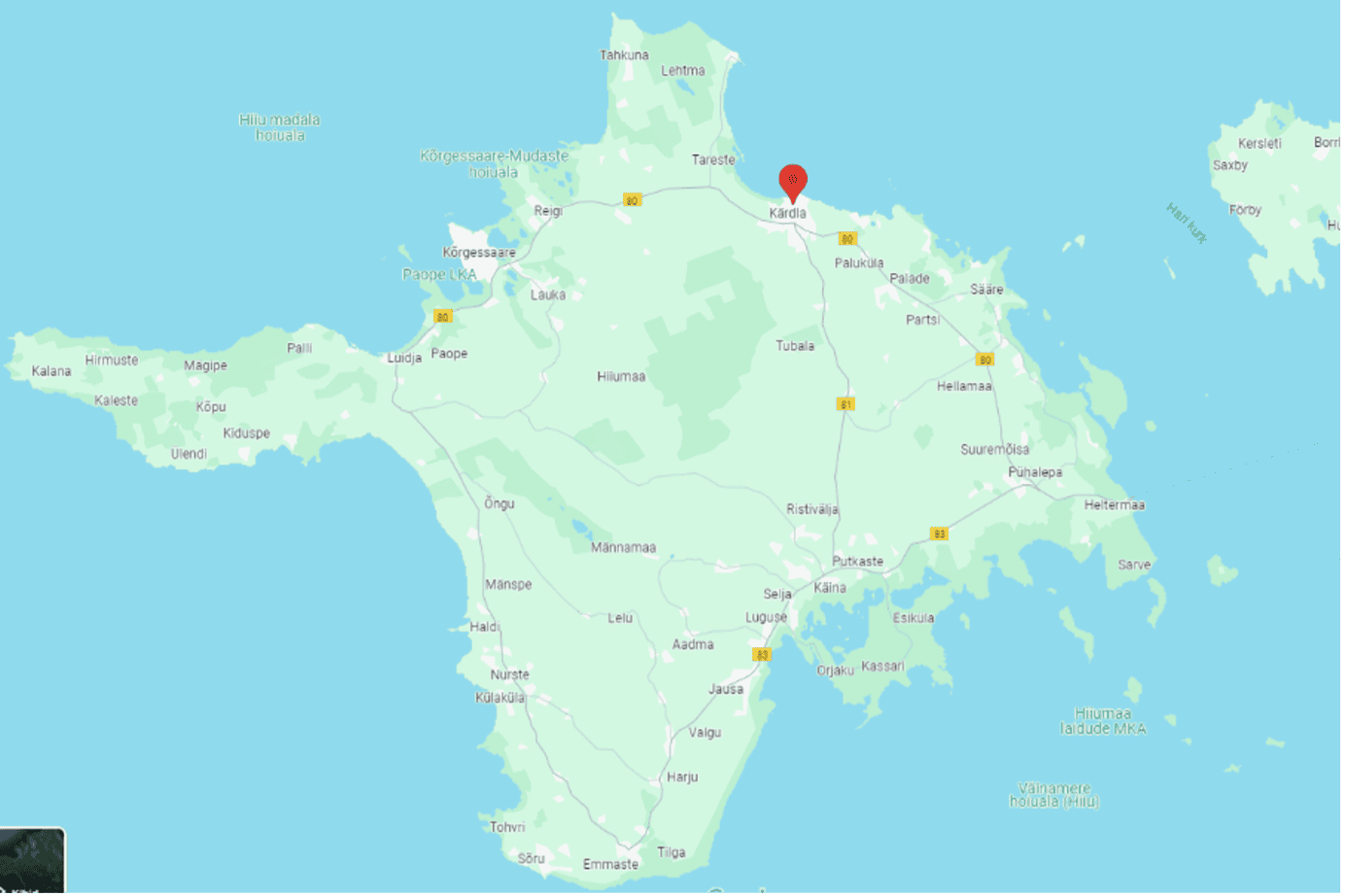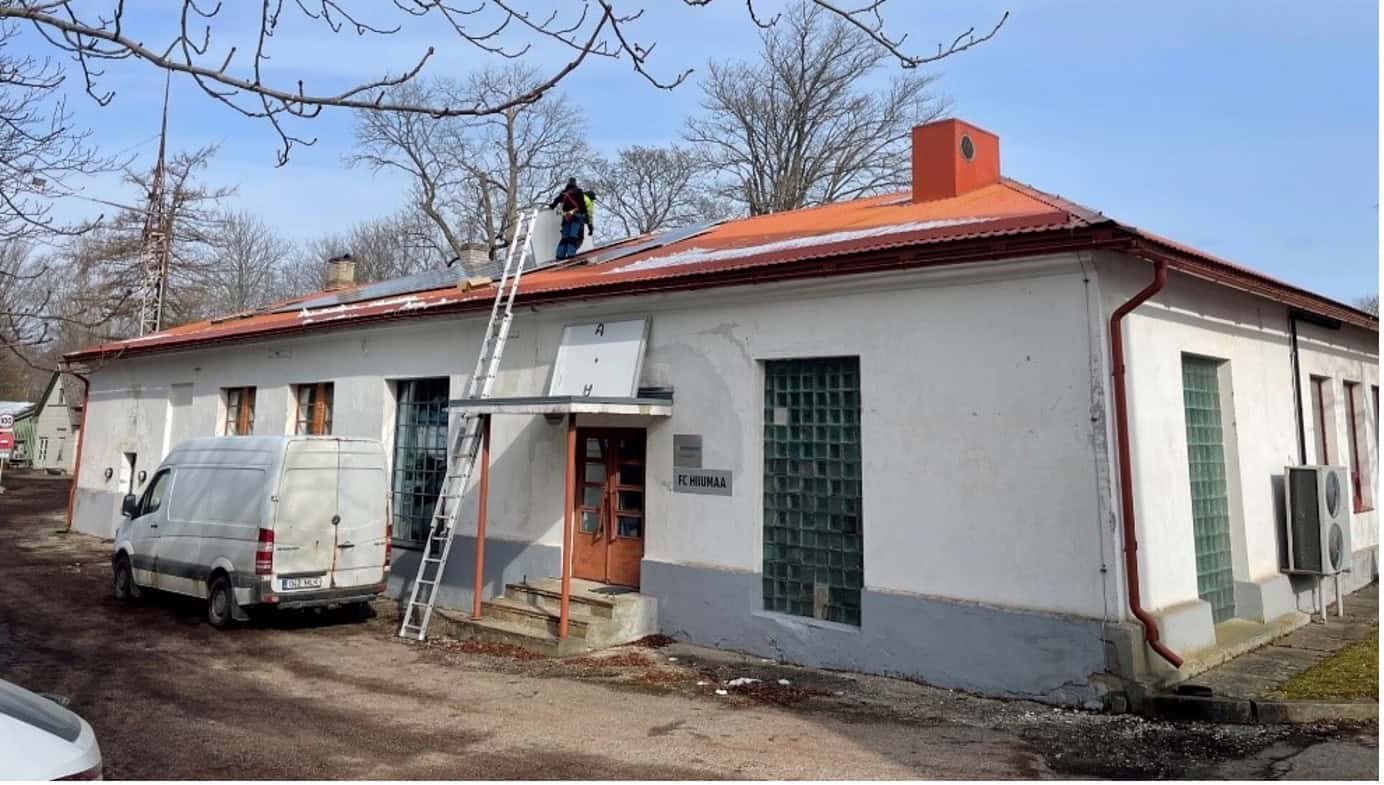
Case Study #1: Energiaühistu at Kärdla (Estonia)
04 October 2024
Author: Tartu Regional Energy Agency
Keywords: Zero export, crowdfunding, for-profit organization
Overview
The for-profit organization Energiaühistu was founded in 2021, and its central office is in Tallinn. This is the first working energy community in Estonia and operates across the entire territory of Estonia. Energiaühistu is on its way to becoming an umbrella organization for smaller energy communities from all over the country.
Energiaühistu’s energy community project in Kärdla, Hiiumaa, was the first local energy community initiative. To strengthen the organization a crowdfunding campaign was open for Energiaühistu members for 3 weeks in September 2022.
Altogether 29 investors participated (35% of EC members):
- The smallest bid was 100 euro, and the largest bid was 1500 euro.
- The average bid was 483 euro, and the median of all bids was 400 euro.
Energiaühistu has around 90 members from all over Estonia. Members are from different backgrounds and demographics (for example entrepreneurs, professors, sustainability activists, community representatives, lawyers, engineers, public sector officers, etc).
20 members are also acting as council members and 1 person is appointed as a head of council. Energiaühistu has 1 board member in charge of day-to-day actions and the only person with a salary. Members are working for public entities, but the entities themselves are not members.
Energiaühistu is an organization with diverse activities. Initially, it was to identify and support communities in Estonia that plan joint energy activities. In 3 years, it has significantly expanded tasks and now also organizes workshops for local energy communities, learns about new technologies, participates in all-Estonian round tables, and discusses developments in the field with politicians. Energiaühistu connects 3 main stakeholder groups – local communities, the public sector, and commercial developers.
There is close cooperation with the leading European energy community umbrella organization, REScoop, among others. This is a good example of the versatile nature of energy communities, which means they must not be based on just one technology and activity but have a much wider range of activities.
The Kärdla project is a good example of zero export PV station (with the opportunity to expand and become on-grid). This is a particularly important example (albeit a very small one) in a situation where the distribution grid capacity has been fully limited in many regions in Estonia, and adding additional capacity requires huge investments that small communities cannot finance.
Legal form
Energiaühistu is a for-profit organization, which is a special legal form most suitable for cooperative entities in Estonia, incorporating democratic principles like “one member=one vote, despite of financial contribution”.
In Estonia, all legal forms are allowed for energy communities. A limited company is the next suitable form after for profit organization. But also, nonprofit organizations and foundations would work, it simply depends on energy communities’ goals and activities. Very often, apartment associations implement joint energy activities (joint PV parks, energy efficiency renovation activities, etc). However, they do not have to establish an additional legal entity since every apartment association has already a special legal form mandatory by law.
Technological setup
Kärdla project has a rooftop PV park of 13 kW – installed in 2023. It is for private office building use, where the building owner pays a fixed energy price to Energiaühistu, and the members who invested can receive dividends from profit. Solax Cloud platform is used to access and analyse data from the inverter of the PV system.
Additionally, Energiaühistu is willing to establish cooperation with the Tallinn City government for having a community PV park on a public building (pilot). It is also working with developers to include local and community benefits in their projects by offering virtual stakes and discounted fixed energy pricing from local renewable energy production within the agreed perimeter (1MW = 1km) (wind, PV).
The solar PV station of the Kärdla project is currently off-grid (it works in a zero-export mode), which means that it does not have a producer connection with the DSO. All the production of the PV plant is used locally in the building. However, there is a possibility of expanding the PV station in the future if it turns out to be possible and economically feasible.
Governance
Energiaühistu’s main principle is democratic decision-making – important decisions can only be made by the majority vote of members. Responsibilities and roles of different participants are specified in contracts, for example, highly contributing members have additional agreements. The membership is open and voluntary; all members must pay an entry fee and a yearly fee.
Usually, the project runs for 10 – 12 years after which the owner of the property can purchase the part from the cooperative with residual value. Consequently, the investment project for members will end after 10+ years (expected return of investment 3-5 years)
Business model
Participation in Kärdla’s business model is an affordable option. The main energy consumer is the owner of the office building. There is no specific cooperation with electricity retailers. Likewise, there are no reduced grid tariffs (solar electricity is not exported to the grid).
All aspects of sharing costs and revenues are described in Energiaühistu statute. There is a fixed electricity price for consumers – 0,2 euro kW/h (no grid tariffs or other usual electricity bill components). For the comparison: the electricity market price was 0,06 – 0,36 euro kW/h (starting 2021) and usual mandatory electricity bill components are added to this. Energiaühistu covers a certain % of the maintenance costs.
Barriers and challenges
Energiaühistu was established in February 2021 when the COVID-19 restrictions were in place. Everything had to be arranged online, and all establishment procedures, meetings and discussions were fully virtual.
Sources
Desk research and an interview with Joosep Veerme, the head of Energiaühistu in February 2024.







